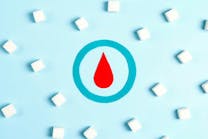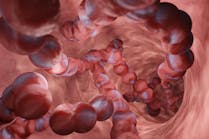In 1960 at Harvard Medical School, second-year student Kenneth McIntosh took an elective course — a course in virology —which, for him, was proving to be quite exciting. At that point 50 years ago, McIntosh did not yet know that his enthusiasm for virology would led him both intellectually and professionally down that scientific path.
With more than 190 original reports and more than 90 reviews, books, and monographs, along with scores of academic and hospital appointments, committee assignments and consultancies, memberships and offices held in professional societies and on editorial boards, it was no surprise that with Stanley Plotkin and Catherine Wilfert, Kenneth McIntosh, MD, founded the Pan American Group for Rapid Viral Diagnosis toward the end of 1977, becoming its first president.
This group subsequently changed its name to the Pan American Society for Clinical Virology and sponsors the yearly Clinical Virology Symposium. Small snippets of historical facts gleaned from his presentation last year on “The Co-Evolution of Virology, Diagnostic Virology, and Clinical Medicine: A Century of Discovery” offers a glimpse into what hooked this future doctor on this area of medicine (see virology history sidebar).
After receiving his medical training at Harvard Medical School (1958 to 1962) Dr. McIntosh spent three years as a medical resident for at the Peter Bent Brigham Hospital in Boston, and then joined the Public Health Service in the Laboratory of Infectious Diseases where he did research in respiratory viruses. In 1968, he spent a year at the National Institute for Medical Research in Mill Hill, north of London, and went from there to his first academic position as head of the Division of Infectious Diseases in the Department of Pediatrics at the University of Colorado Medical Center in Denver.
In Denver, he also directed the Virology Diagnostic Laboratory and became interested in the importance of virology laboratories in clinical infectious diseases. He spent a sabbatical year in Newcastle, England, working with Dr. Philip Gardner on (among other things) the use of immunofluorescence for rapid diagnosis of respiratory viral infections.
In 1979, Dr. McIntosh moved back to Boston to become chief of the Division of Infectious Diseases at Children's Hospital where he founded and then directed the Diagnostic Virology Laboratory from 1979 until 1999. He became very involved in pediatric HIV infections in 1985, stepped down as head of the division in 2000, and now remains professor of Pediatrics at Harvard Medical School and professor of Immunology and Infectious Diseases at the Harvard School of Public Health.
As his medical career progressed, so did diagnostic virology. Dr. McIntosh says that there have been two notable changes in the lab in just the last 10 years: the wide availability of sensitive molecular testing and point-of-care (POC) rapid diagnostics. Molecular testing is now much more versatile in that it can identify many more viruses than previously. While these tests are technically demanding, current formats have become simpler than when they were first introduced, and they are inexpensive enough for more widespread use. Bedside or POC testing, mostly based on detecting viral antigens, is an example of how convenient and economical diagnostic tests have become for more common diseases — influenza, respiratory syncytial virus infection, and diarrhea caused by the nova virus.
While diagnostic testing, in some cases, is as simple as seeing a color change on a card, and while POCT can be a boon to small laboratories, today it is also often cost effective to send tests to a reference laboratory. New and exotic diseases mean that molecular diagnostics has a vital place in the laboratory: SARS is the most unusual of these, and Ebola is second only to bioterrorism in its status as a dangerous disease. A disease like SARS, he says, that has now infected humans can adapt, speeding its spread. “There will be some nasty 'bugs' if they adapt to the appropriate host,” he says, pointing out the example of mosquito-borne West Nile virus which only first appeared in the U.S. in 1997 in New York and, subsequently, has spread nationwide.
He is well cognizant of the extraordinary effectiveness of HIV drugs that have stopped the transmission of HIV from a pregnant mother to her child. The global goal now is to develop programs that will find HIV- infected mothers so they can be tested and given drugs to prevent infection of their babies. As to whether or not HIV, for example, will be eradicated at some point soon, Dr. McIntosh surmises, “Perhaps 100 years from now; surely not in my lifetime.”
As for developing vaccines to eradicate diseases, like the H1N1 flu virus, Dr. McIntosh suggests that the delay in development of vaccines might improve if U.S. companies could market tissue culture-based vaccines, as is done in Europe, rather than using the more than 30-year-old process of growing the vaccines in hens' eggs, where the manufacturers must wait for the eggs to be laid, one per day. But to upgrade the U.S. vaccine manufacturing process would involve both investments in new methods and new clinical trials, and also the risks of possible adverse events. Thus, “We use the 'old way.'”
Among his pearls of wisdom for lab personnel, Dr. McIntosh shares, “Behave as if everything is risky, and obey all the rules.”





